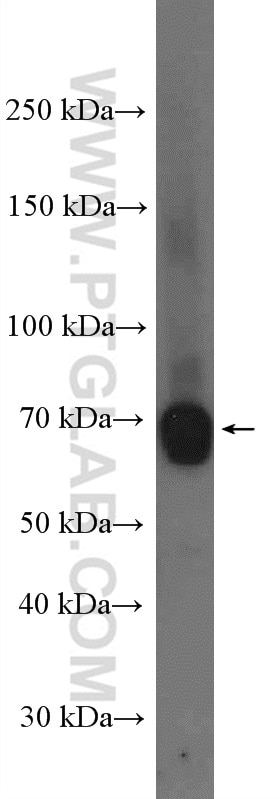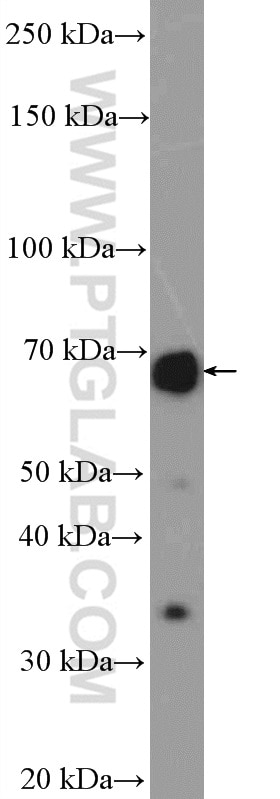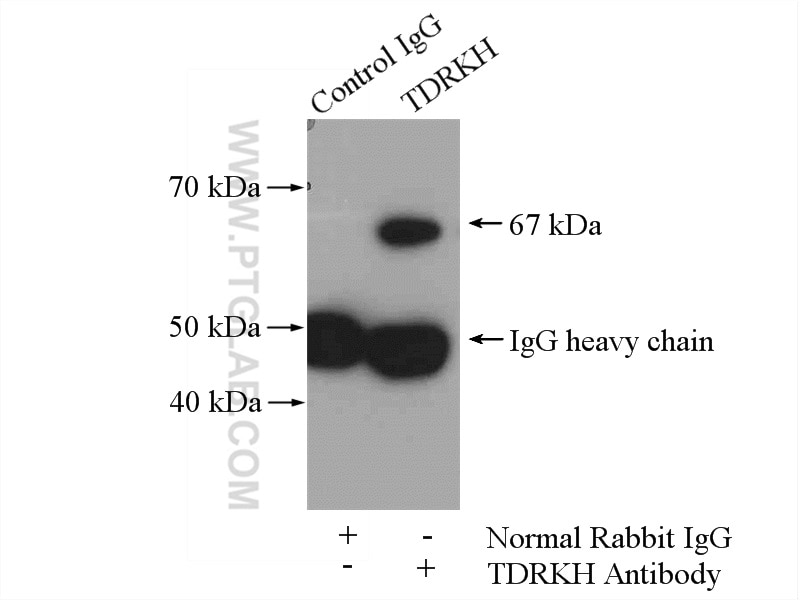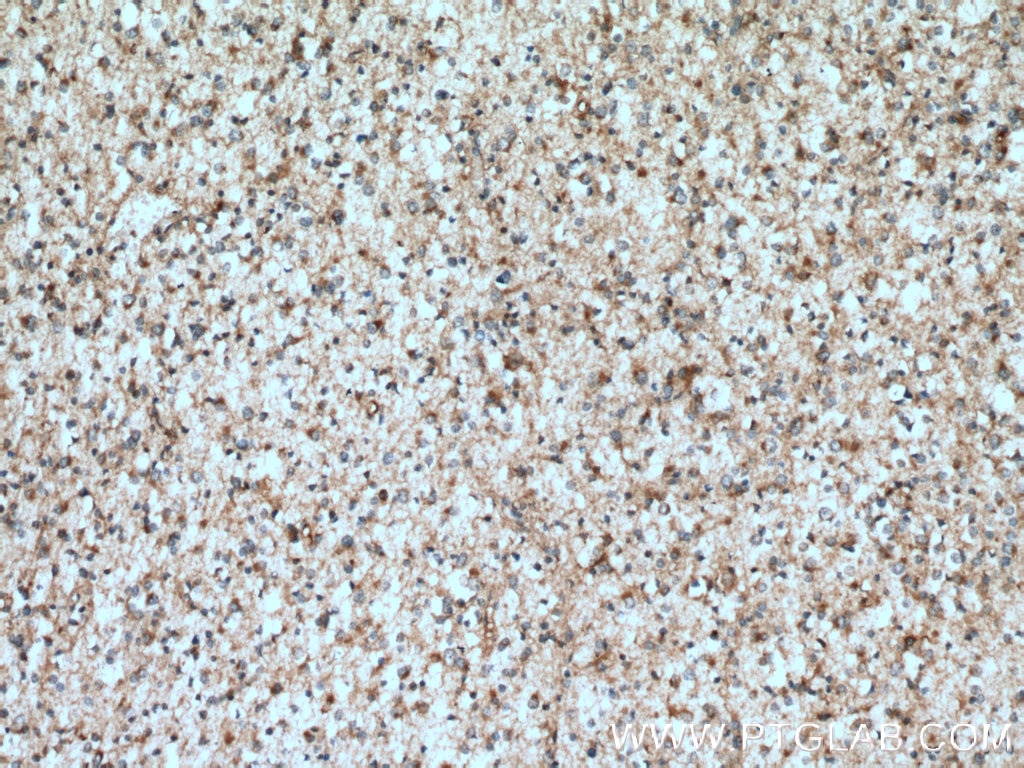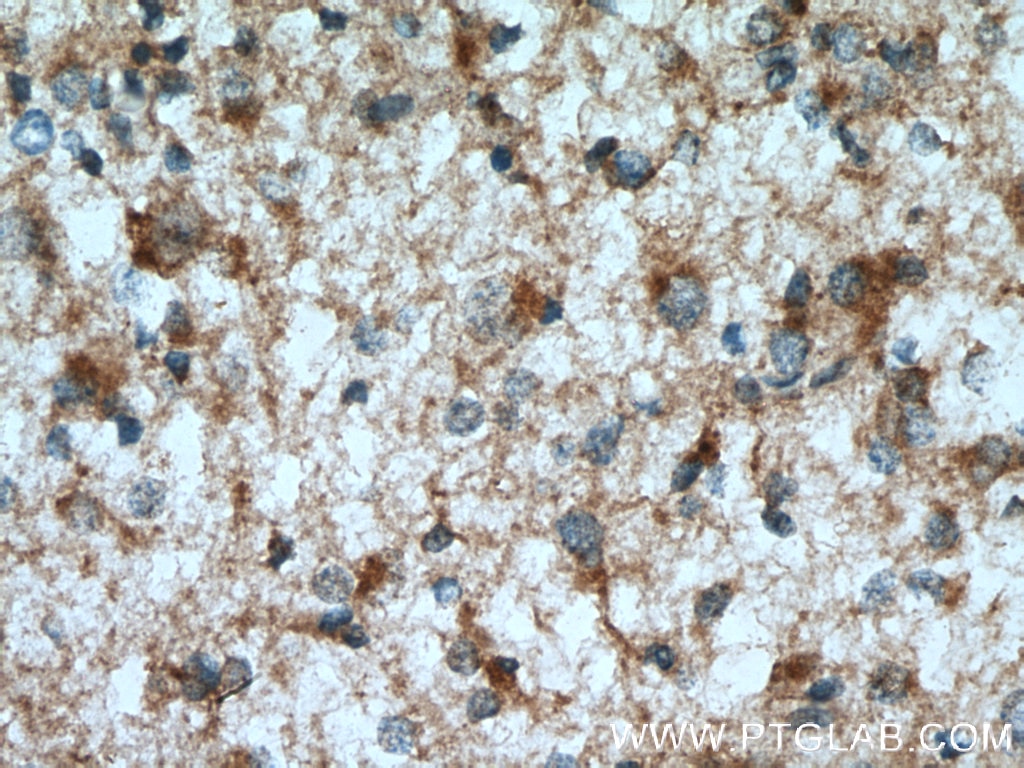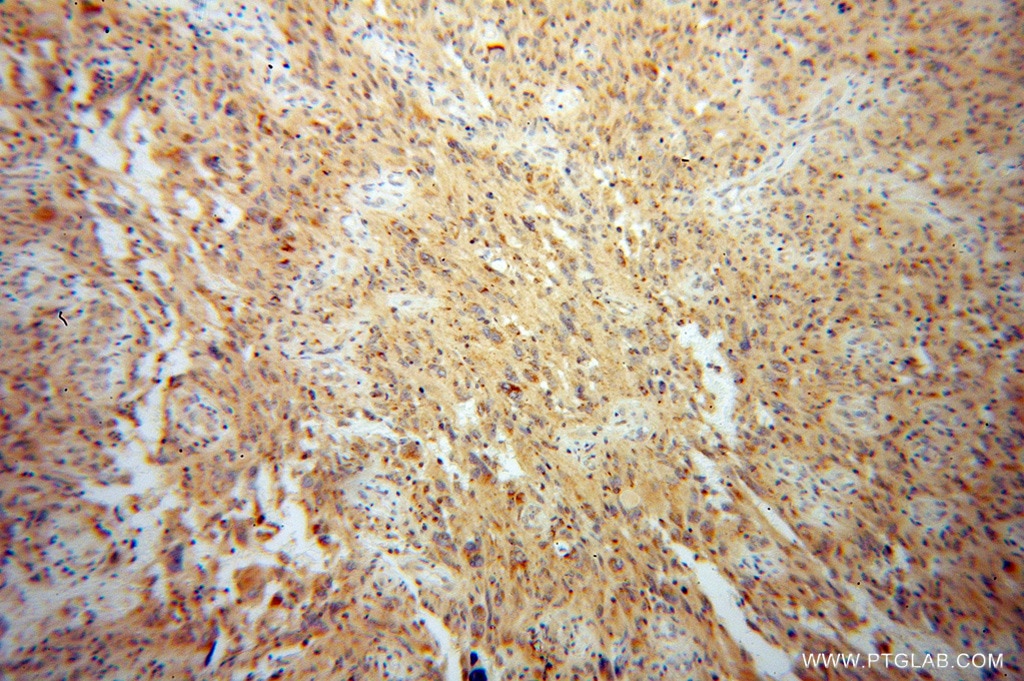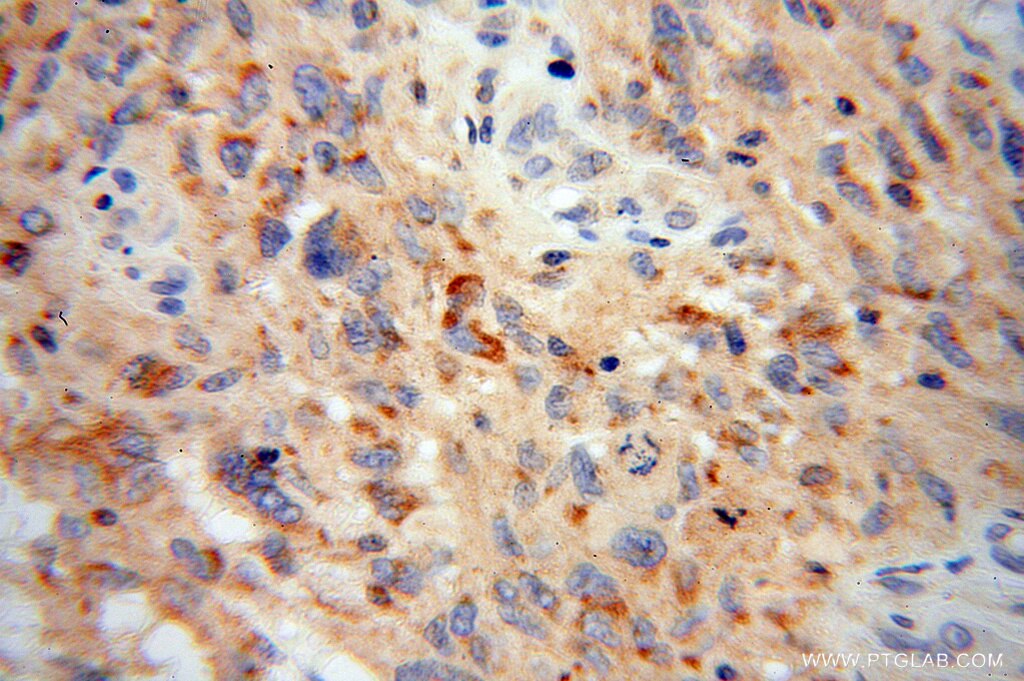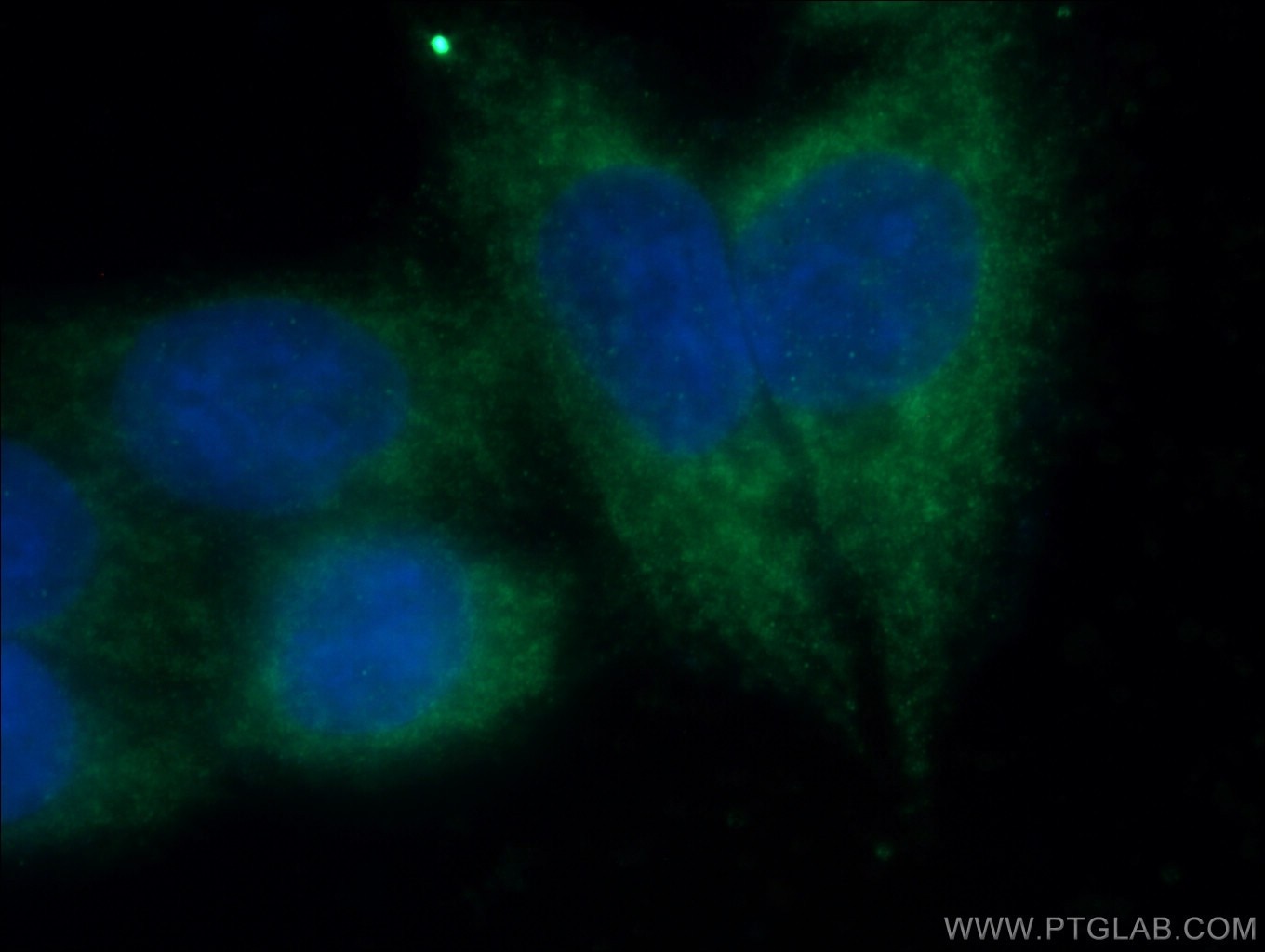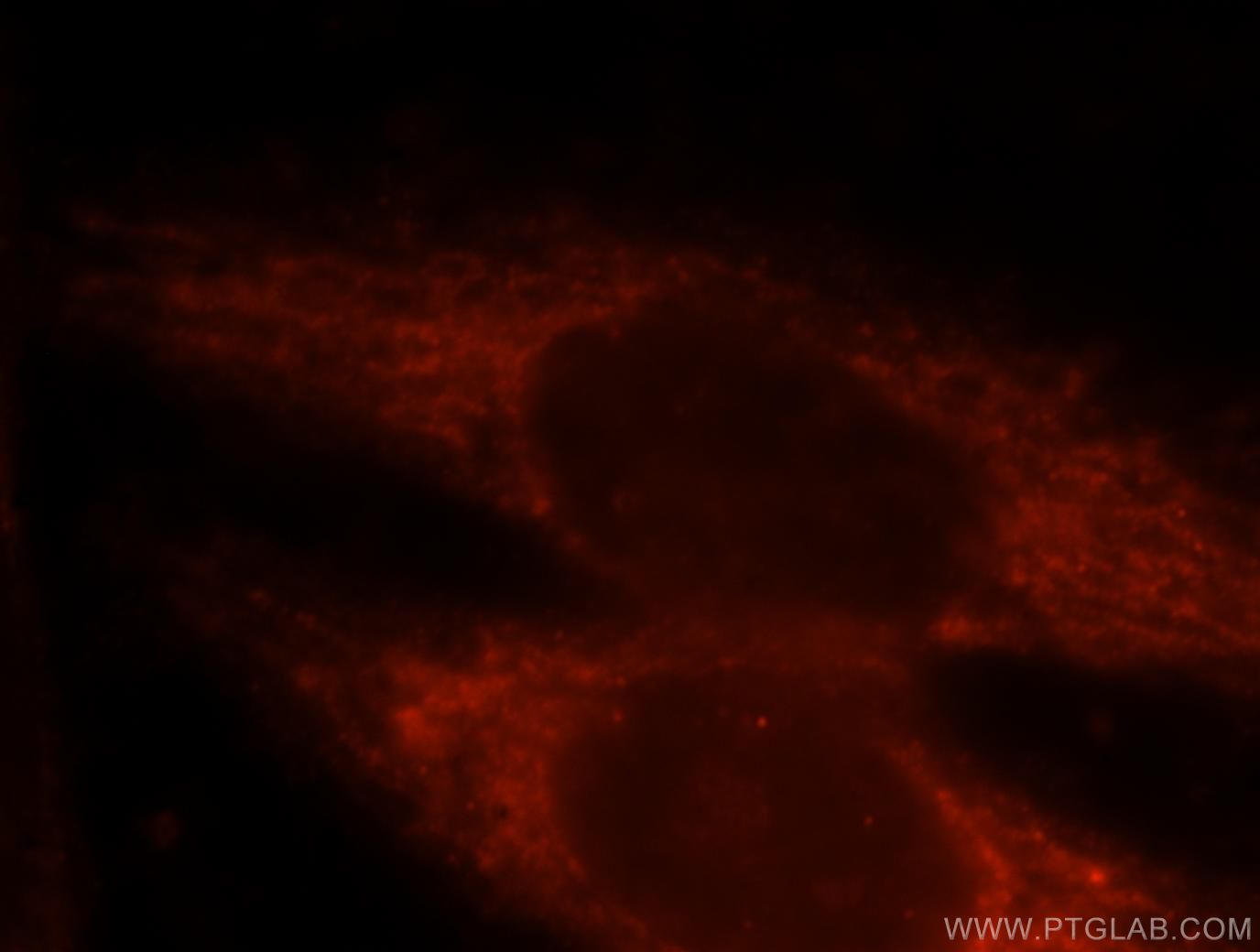- Phare
- Validé par KD/KO
Anticorps Polyclonal de lapin anti-TDRKH specific
TDRKH specific Polyclonal Antibody for WB, IP, IF, IHC, ELISA
Hôte / Isotype
Lapin / IgG
Réactivité testée
Humain, rat, souris et plus (1)
Applications
WB, IHC, IF/ICC, IP, RIP, ELISA
Conjugaison
Non conjugué
N° de cat : 13528-1-AP
Synonymes
Galerie de données de validation
Applications testées
| Résultats positifs en WB | cellule NCCIT, tissu cérébral de souris |
| Résultats positifs en IP | tissu cérébral de souris |
| Résultats positifs en IHC | tissu de gliome humain, il est suggéré de démasquer l'antigène avec un tampon de TE buffer pH 9.0; (*) À défaut, 'le démasquage de l'antigène peut être 'effectué avec un tampon citrate pH 6,0. |
| Résultats positifs en IF/ICC | cellules HeLa |
Dilution recommandée
| Application | Dilution |
|---|---|
| Western Blot (WB) | WB : 1:2000-1:10000 |
| Immunoprécipitation (IP) | IP : 0.5-4.0 ug for 1.0-3.0 mg of total protein lysate |
| Immunohistochimie (IHC) | IHC : 1:50-1:500 |
| Immunofluorescence (IF)/ICC | IF/ICC : 1:50-1:500 |
| It is recommended that this reagent should be titrated in each testing system to obtain optimal results. | |
| Sample-dependent, check data in validation data gallery | |
Applications publiées
| KD/KO | See 2 publications below |
| WB | See 12 publications below |
| IHC | See 3 publications below |
| IF | See 11 publications below |
| IP | See 4 publications below |
| RIP | See 1 publications below |
Informations sur le produit
13528-1-AP cible TDRKH specific dans les applications de WB, IHC, IF/ICC, IP, RIP, ELISA et montre une réactivité avec des échantillons Humain, rat, souris
| Réactivité | Humain, rat, souris |
| Réactivité citée | bovin, Humain, souris |
| Hôte / Isotype | Lapin / IgG |
| Clonalité | Polyclonal |
| Type | Anticorps |
| Immunogène | TDRKH specific Protéine recombinante Ag4422 |
| Nom complet | tudor and KH domain containing |
| Masse moléculaire calculée | 606 aa, 67 kDa |
| Poids moléculaire observé | 67 kDa |
| Numéro d’acquisition GenBank | BC032690 |
| Symbole du gène | TDRKH |
| Identification du gène (NCBI) | 11022 |
| Conjugaison | Non conjugué |
| Forme | Liquide |
| Méthode de purification | Purification par affinité contre l'antigène |
| Tampon de stockage | PBS avec azoture de sodium à 0,02 % et glycérol à 50 % pH 7,3 |
| Conditions de stockage | Stocker à -20°C. Stable pendant un an après l'expédition. L'aliquotage n'est pas nécessaire pour le stockage à -20oC Les 20ul contiennent 0,1% de BSA. |
Informations générales
Tudor and KH domain-containing protein(TDRKH)Tudor domains are protein modules that mediate protein-protein interactions, potentially by binding to methylated ligands. Both KH and tudor domains are involved in binding RNA or single-strand DNA. Tudor also is a germ cell-specific protein with multiple Tudor domains and is involved in germ plasm formation and germ cell specification. TDRKH is one Tudor protein with a single Tudor domain.
Protocole
| Product Specific Protocols | |
|---|---|
| WB protocol for TDRKH specific antibody 13528-1-AP | Download protocol |
| IHC protocol for TDRKH specific antibody 13528-1-AP | Download protocol |
| IF protocol for TDRKH specific antibody 13528-1-AP | Download protocol |
| IP protocol for TDRKH specific antibody 13528-1-AP | Download protocol |
| Standard Protocols | |
|---|---|
| Click here to view our Standard Protocols |
Publications
| Species | Application | Title |
|---|---|---|
Nat Cell Biol Ribosomes guide pachytene piRNA formation on long intergenic piRNA precursors. | ||
Sci Adv Global ubiquitylation analysis of mitochondria in primary neurons identifies endogenous Parkin targets following activation of PINK1. | ||
Nat Commun PNLDC1 is essential for piRNA 3' end trimming and transposon silencing during spermatogenesis in mice.
| ||
EMBO J Tdrkh is essential for spermatogenesis and participates in primary piRNA biogenesis in the germline.
| ||
Proc Natl Acad Sci U S A Mouse Piwi interactome identifies binding mechanism of Tdrkh Tudor domain to arginine methylated Miwi. |
